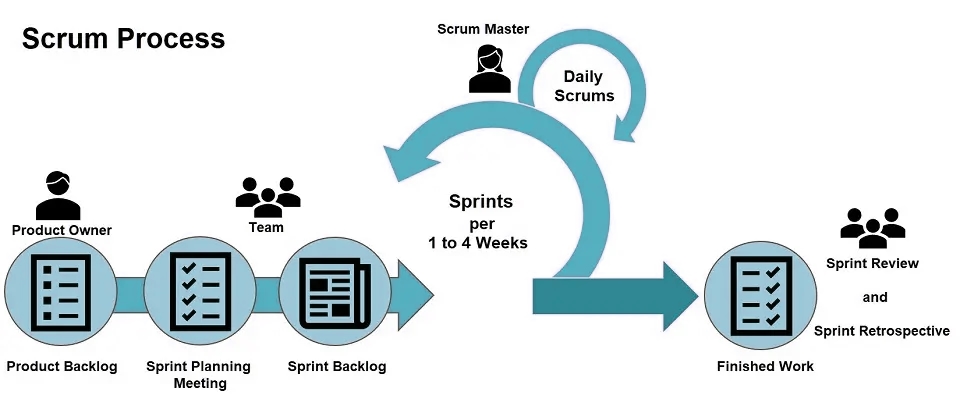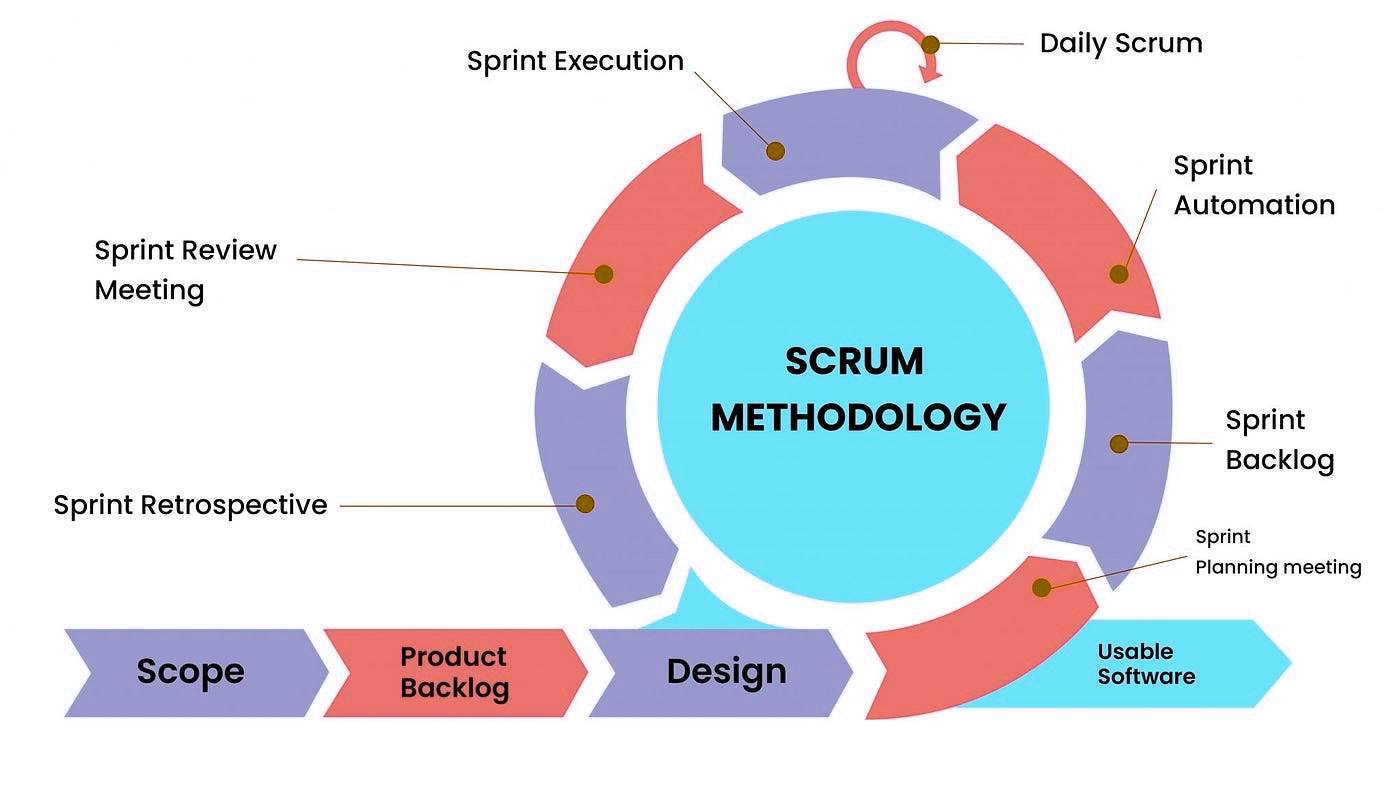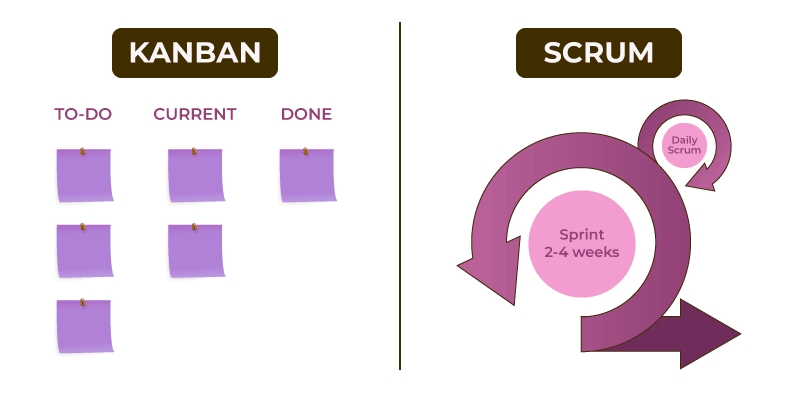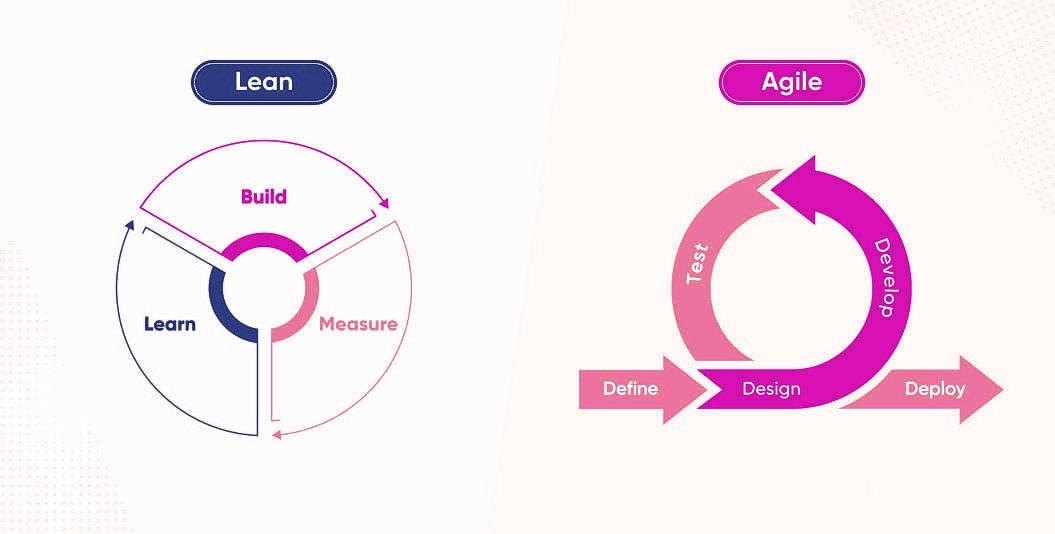Types of Agile Frameworks
Agile management is not a one-size-fits-all approach. Various frameworks embody the Agile principles, each offering distinct methodologies to suit different project types and team needs. In this chapter, we'll dive into the most popular Agile frameworks: Scrum, Kanban, Lean, Extreme Programming (XP), and Crystal. Understanding these frameworks will enable you to select the best approach for your projects and teams.
Scrum
**For Agile VS Waterfall Model (click to go)
Scrum is one of the most widely adopted Agile frameworks. It emphasizes iterative progress through a series of fixed-length cycles called sprints, typically lasting 2-4 weeks. Scrum promotes a high level of collaboration, transparency, and continuous improvement.

Key Components:
- Roles:
- Product Owner: Responsible for maximizing the value of the product by managing and prioritizing the product backlog. The Product Owner ensures the team works on the most valuable features.
- Scrum Master: Facilitates the Scrum process, helps the team follow Agile principles, removes impediments, and shields the team from distractions.
- Development Team: A self-organizing, cross-functional group that works together to deliver the product increment.
2. Artifacts:
- Product Backlog: A prioritized list of all features, enhancements, bug fixes, and requirements for the product.
- Sprint Backlog: A subset of the product backlog items selected for a sprint, along with a plan for delivering them.
- Increment: The sum of all the product backlog items completed during a sprint, which includes the value of increments from all previous sprints.
3. Events:
- Sprint: A time-boxed period during which a potentially shippable product increment is created. Sprints usually last between 2 and 4 weeks.
- Sprint Planning: A meeting at the start of each sprint where the team selects backlog items to work on and defines the sprint goal.
- Daily Scrum: A 15-minute daily meeting for the team to synchronize activities and plan for the next 24 hours.
- Sprint Review: A meeting at the end of the sprint to inspect the increment and adapt the product backlog based on feedback.
- Sprint Retrospective: A meeting for the team to reflect on the sprint and identify areas for improvement.

Benefits:
- Enhances transparency and communication within the team.
- Provides clear roles and structured processes.
- Focuses on delivering tangible value incrementally.
Kanban
Kanban is an Agile framework that emphasizes visualizing work, limiting work in progress (WIP), and improving flow. Originating from lean manufacturing, Kanban helps teams manage work by visualizing tasks on a board.

Key Components:
- Visualize the Workflow: Create a visual representation of the workflow using a Kanban board. Columns on the board represent different stages of the workflow (e.g., To Do, In Progress, Done).
- Limit Work in Progress (WIP): Set limits on the number of tasks that can be in each column to prevent bottlenecks and ensure a smooth flow of work.
- Manage Flow:Continuously monitor and manage the flow of work through each stage to identify and resolve issues.
- Make Process Policies Explicit: Clearly define and communicate the rules and guidelines for how work is processed and moved through the workflow.
- Implement Feedback Loops: Regularly review and adapt processes based on feedback. This can be achieved through daily stand-ups and periodic reviews.
- Improve Collaboratively, Evolve Experimentally: Encourage continuous improvement by involving the entire team in identifying and implementing incremental changes.
Benefits:
- Provides a visual representation of the workflow, enhancing transparency.
- Improves efficiency by limiting WIP and managing flow.
- Encourages continuous improvement through regular feedback loops.
Lean
Lean is an Agile framework derived from lean manufacturing principles, focusing on delivering value to the customer, eliminating waste, and optimizing processes.
Key Principles:
- Eliminate Waste: Identify and remove activities that do not add value to the customer. This includes unnecessary processes, excess inventory, and inefficient practices.
- Build Quality In: Ensure that quality is maintained at every stage of the process through continuous testing and feedback.
- Create Knowledge: Foster a culture of learning and continuous improvement. Encourage teams to experiment, gather data, and share insights.
- Defer Commitment: Make decisions as late as possible based on the most current information. This reduces the risk of committing to decisions based on incomplete or outdated data.
- Deliver Fast: Aim to deliver small, valuable increments quickly to get feedback and adapt accordingly.
- Respect People: Empower teams by providing them with the autonomy and support they need to succeed.
- Optimize the Whole: Focus on optimizing the entire process rather than individual parts. This holistic approach ensures that improvements in one area do not negatively impact others.
Benefits:
- Reduces waste and improves efficiency.
- Enhances product quality through continuous testing and feedback.
- Encourages a culture of learning and continuous improvement.
Extreme Programming (XP)
Extreme Programming (XP) is an Agile framework that emphasizes technical excellence and customer satisfaction. XP focuses on improving software quality and responsiveness to changing customer requirements through frequent releases in short development cycles.
Key Practices:
- Pair Programming: Two developers work together at one workstation. This practice improves code quality and facilitates knowledge sharing.
- Test-Driven Development (TDD): Write tests before writing the code they test. This ensures that the code is designed to meet the test requirements from the outset.
- Continuous Integration: Integrate and test code frequently, ideally several times a day, to detect and fix issues early.
- Refactoring: Continuously improve the codebase by making small, incremental changes that improve its structure and readability without altering its functionality.
- Simple Design: Focus on designing only what is necessary to meet the current requirements, avoiding over-engineering.
- Customer Collaboration: Involve the customer closely throughout the development process to ensure that the product meets their needs and expectations.
Benefits:
- Improves code quality and reduces defects.
- Enhances responsiveness to changing customer requirements.
- Promotes continuous learning and technical excellence.
Crystal
- Crystal is a family of Agile methodologies tailored to different project sizes and criticality levels. It emphasizes people, interaction, community, skills, talents, and communication as the primary factors of project success.
Key Principles:
- Frequent Delivery: Deliver working software frequently, with intervals ranging from a few weeks to a few months.
- Reflective Improvement: Regularly reflect on the process and make improvements as needed.
- Close Communication: Foster close communication within the team and with stakeholders.
- Personal Safety: Create an environment where team members feel safe to speak up, experiment, and make mistakes.
- Focus: Allow team members to focus on their work without distractions.
- Easy Access to Expert Users: Ensure that the team has easy access to users and stakeholders for clarifications and feedback.
Benefits:
- Customizable to different project sizes and criticality levels.
- Emphasizes communication and team dynamics.
- Encourages continuous improvement and reflection.

